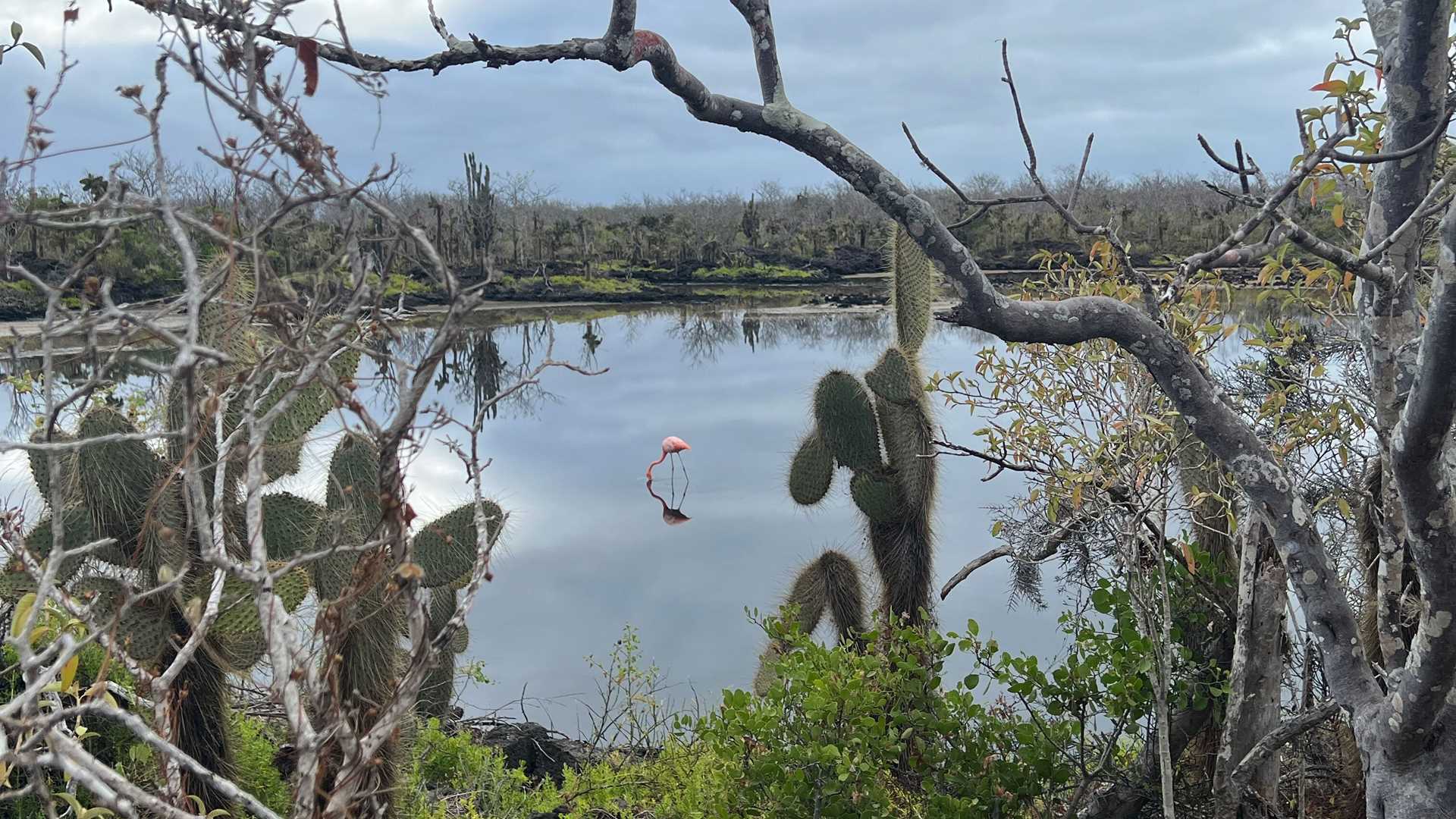Guests onboard National Geographic Endeavour II spent the day exploring Santa Cruz Island. We began with a hike at Cerro Dragon on the northern facing side of Santa Cruz. This region is extremely dry due to the influence of the southeast trade winds. These winds make their way up the western side of the South American continent, deflecting to the west at the equator and finally meeting the southern facing side of the Galapagos Islands. These trade winds bring moisture, which allows vegetation to grow.
Cerro Dragon is an interesting site to observe. Galapagos iguanas have evolved to thrive in disparate ecosystems; in ecology, we refer to this as niche partitioning. Marine iguanas are seen in the intertidal zone, where they find their main food source: green algae. Conversely, land iguanas predominantly feed upon cactus pads and fruits. As such, they are found throughout the inner, drier regions of the central islands. Marine iguanas lay their eggs on the sandy coastlines of the archipelago, whereas land iguanas lay their eggs farther inland. This partitioning of niches within the ecosystem reduces the rate of competition amongst iguana species, and therefore, reduces the probability of one iguana species outcompeting and displacing another. This promotes diversity in a group of genetically similar species. Guests were pleased to observe both marine and land iguanas at this special site.
We also walked through a dry forest, where we observed several endemic and native plant species. The coastal lowlands of the islands are home to a disproportionate amount of endemic plant species. These zones are probably the harshest environment in the Galapagos, so species that thrive there must be highly adapted to dry, salty conditions. This promotes endemism.
We visited a brackish lagoon at Cerro Dragon, where we were delighted to spot flamingos. These birds are some of the rarest in the archipelago, with only around 200 across the islands. The pink coloration of their plumage is a result of the carotenoids found in their food source. We observed a juvenile flamingo as well. Baby flamingos are born with a straight beak so they can be fed by their parents. It takes some time for them to build up the carotenoids in their body to create pink plumage.
After our hike, guests had the option of visiting a beautiful beach for bay snorkeling or Guy Fawkes Islet for deep water snorkeling. After lunch, we disembarked for several excursions, including: kayaking, paddleboarding, or a Zodiac cruise along the coast of Borrero in northern Santa Cruz Island.
Photo caption and photographer: A flamingo feeds in a brackish lagoon at Cerro Dragon. Flamingos feed primarily on small crustaceans, but they also eat a variety of algae species as well. They have a filter system in their beaks that allows them to siphon out their desired prey species. Photo by Cristian Villarroel







